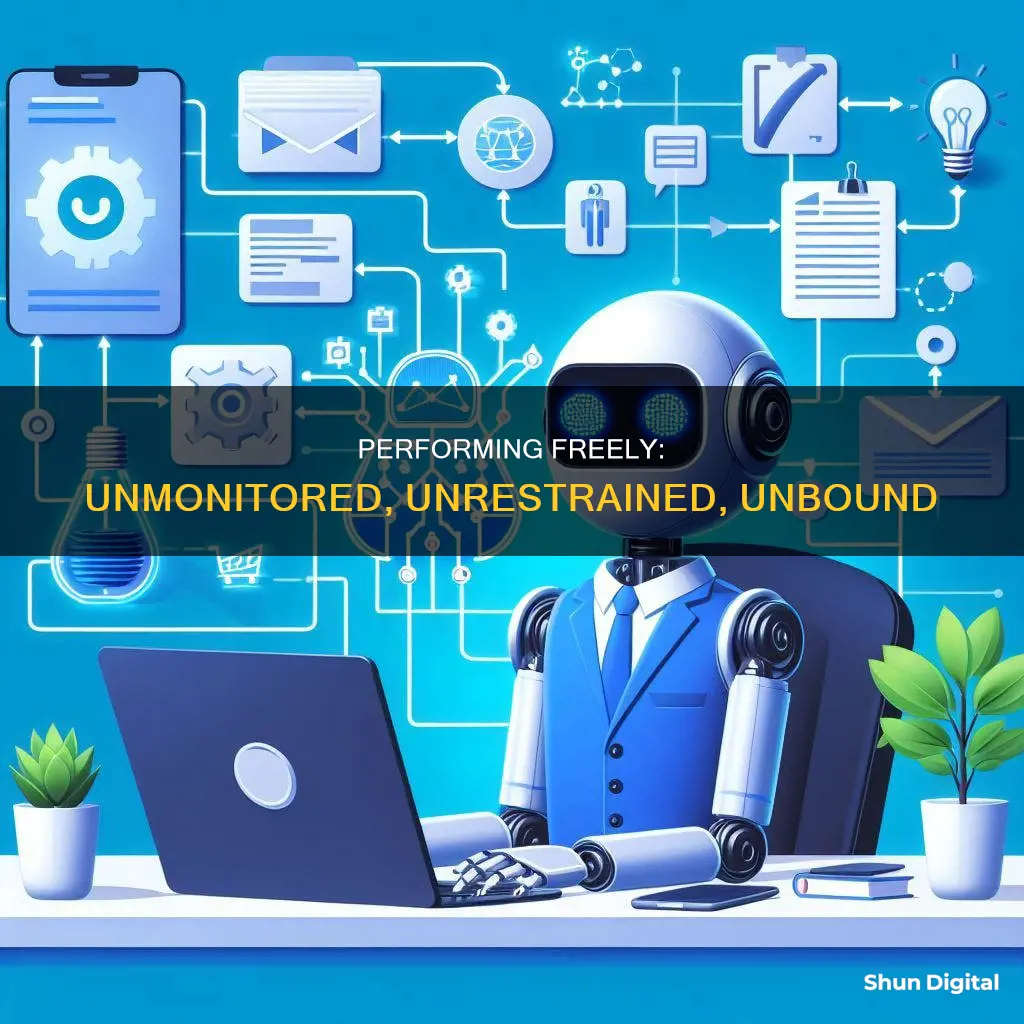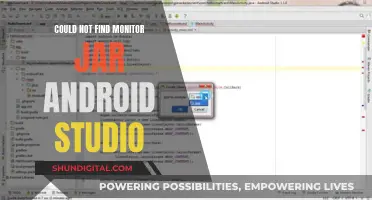
The idea of being monitored at work can be uncomfortable, and this feeling intensifies when the boundaries and specifics of such oversight are unclear. While monitoring can be an effective tool for employers to ensure productivity, protect sensitive information, and enhance security, it can also create tension and distrust among employees. The balance between maintaining oversight and respecting employee privacy is delicate, and when monitoring practices are not transparent or overly invasive, it can lead to a toxic work environment.
Employees can identify potential surveillance through various indicators, such as unusual device behaviour, restricted access to websites or applications, and suspicious emails or messages. Additionally, if managers display an uncanny awareness of employees' daily tasks and conversations, it may be a sign that monitoring systems are in place.
Given the widespread implementation of monitoring tools in workplaces, it is likely that many individuals will encounter some form of surveillance during their careers. While these practices are generally legal, they present ethical questions concerning personal freedom and the culture of trust within an organization.
| Characteristics | Values |
|---|---|
| Performance | Being watched can change behaviour and choices for the better without people realising |
| Invasion of privacy | Employees may feel their personal space is being invaded, leading to a sense of mistrust and discomfort at work |
| Stress | The lack of awareness about the extent of monitoring can lead to increased stress |
| Mistrust | Sustained workplace monitoring can lead to a decline in trust and a stifling work culture |
| Job satisfaction | Continuous observation can contribute to a degradation in job satisfaction |
| Counterproductive behaviours | Awareness of being monitored can induce counterproductive behaviours |
What You'll Learn

Privacy concerns in the modern workplace
Employers' Perspective
Employers are justifiably concerned about threats to their business, such as theft, data breaches, identity theft, inappropriate behaviour, violence, and drug use. Monitoring employees can help mitigate these risks. Additionally, employers may be concerned about productivity losses due to employees using office technology for personal matters.
Employees' Perspective
Employees have a right to privacy, and excessive monitoring can be seen as an invasion of their personal space. It can also create a sense of distrust and negatively impact job satisfaction and productivity.
Legal and Ethical Considerations
The Electronic Communications Privacy Act of 1986 (ECPA) is a federal law that governs electronic monitoring. While it appears to prohibit employers from monitoring oral, wire, and electronic communications, it contains two significant exceptions: the business purpose exception and the consent exception. The business purpose exception allows employers to monitor communications if they have a legitimate business purpose. The consent exception permits monitoring if employees have given their consent.
State laws also play a crucial role in employee monitoring. Some states, like Connecticut, require employers to inform employees about the types of electronic monitoring they may be subject to. Other states, like California, Florida, Louisiana, and South Carolina, have constitutions that explicitly grant residents a right to privacy, which applies to personal electronic information and communication in the workplace.
Best Practices for Monitoring
To balance the interests of both employers and employees, several best practices can be followed:
- Transparency: Be transparent about the intended use of surveillance systems, data usage, access, and tracked activities.
- Purpose Limitation: Collect and use data only for specific and legitimate business purposes, retaining it only as long as necessary.
- Proportionality: Use the least invasive methods possible to achieve legitimate business interests.
- Security: Implement reasonable security measures to protect employee data from misuse and unauthorised access.
- Communication: Clearly communicate monitoring policies and procedures to employees, and ensure they understand the privacy expectations.
In conclusion, privacy concerns in the modern workplace require a delicate balance between employers' valid interests and employees' reasonable expectations of privacy. By following legal guidelines and best practices, employers can monitor employees while respecting their privacy rights.
Finding Monitor Names: A Simple Guide to Locate Your Screen Identity
You may want to see also

Surveillance and employee rights
Employee monitoring is becoming more common as technology advances, but it's important to understand the ethical and legal boundaries. While monitoring can be used to improve productivity and security, it's essential to respect employee privacy rights. Here's a detailed look at the topic of surveillance and employee rights.
Legal Perspective
From a legal standpoint, disclosing surveillance is often the smartest tactic. By informing employees that they are subject to monitoring, employers can remove any reasonable expectation of privacy, which is a key element in invasion-of-privacy lawsuits. This disclosure also lessens the negative impact on employee morale.
The primary federal law governing employee monitoring in the US is the Electronic Communications Privacy Act of 1986 (ECPA). This act allows employers to monitor all employee communication as long as there is a legitimate business reason. Additionally, the ECPA permits further monitoring with employee consent, which may extend to personal communications. However, several states have implemented their own laws providing additional privacy protections for employees.
State Laws
State laws regarding employee monitoring vary, and it's crucial to be aware of the regulations in your specific state. Here are some notable examples:
- Connecticut: Employers must provide written notice to employees before engaging in any form of electronic monitoring and detail the methods used.
- California, Florida, Louisiana, and South Carolina: These states' constitutions explicitly guarantee residents a right to privacy, so employers should be cautious when implementing monitoring systems.
- New York: Employers must provide specific notice upon hire and display it in a conspicuous place. They must also keep an acknowledgment of monitoring on file for each employee.
- California, Connecticut, Florida, Illinois, Maryland, and others: These are known as "two-party consent states," where all parties in a conversation must give consent for it to be recorded.
Ethical Considerations
While employee monitoring may be legal in many cases, it's important to consider the ethical implications. A recent study found that employees feel less responsible for their conduct when they're being monitored. They also feel less trusted by their employers, which can negatively impact turnover, productivity, and employee happiness.
Best Practices for Employers
To balance the benefits of monitoring with employee privacy rights, employers should follow these best practices:
- Be transparent about the purpose of monitoring and communicate openly with employees.
- Track only what is necessary to achieve legitimate business goals.
- Clearly inform employees about the use of security cameras through visible signage.
- Obtain written consent before monitoring employees' personal devices.
- Ensure that any monitoring efforts comply with federal, state, and local laws.
In conclusion, while employee monitoring can serve important purposes, it's crucial to respect employees' privacy rights and communicate openly to maintain a positive and productive work environment.
Differentiating Iguanas and Monitors: A Quick Guide
You may want to see also

Strategies to avoid monitoring
- Using a second monitor: Having a dual-monitor system is more convenient for employees, but it is also easier to deceive employers. Work-related apps are open on the primary display, while the second screen is used for personal activities.
- Mouse jiggling devices: These are battery-operated toys that automate mouse movements, tricking the tracking device into thinking it is sensing movement.
- Clamping keys: This method involves placing an object on a key, such as the space bar, to trick the system into thinking the employee is actively working in an app.
- Falsifying timesheets: Employees can manually change records when a time-tracking tool records free time or non-work-related activity.
- Implementing a red herring: This involves opening a full-screen window with a work programme in the background while playing games or watching videos.
- Running a virtual machine (VM): This allows employees to clock in on one operating system and then switch to another to complete professional duties that are not billed to them.
- Hiding processes from the time tracker: Employees can work on personal projects during work hours or use a separate, unlogged computer for work.
- Deactivating the tool: Tech-savvy employees may immobilize the software or install antivirus software or firewalls that block the monitoring software from loading or functioning correctly.
- Remote access: Employees can set up the time tracker on a work PC and then install a remote access client on a second PC to make online shopping, watching films, and playing games count as productive.
- Modifying the code: Tech-savvy professionals can manipulate a monitoring app's code to track specific behaviours.
To avoid these strategies being used to circumvent monitoring software, employers should:
- Select a dependable monitoring tool that can track multi-monitor configurations.
- Use time-tracking software that incorporates activity monitoring to observe the specific activities employees engage in.
- Use a system that captures footage or records a video of an employee's device to spot suspicious behaviour.
- Integrate features such as staff activity monitoring to precisely track employee locations and monitor their activities.
- Seek out tamper-proof time-tracking software that cannot be easily uninstalled.
- Opt for a cloud-based solution to ensure the tracking system cannot be halted or deleted by employees.
- Use remote monitoring software specifically engineered for remote jobs to monitor employee activities even when they are not physically present.
- Employ a time tracker with robust encryption to prevent data manipulation.
Ankle Monitors: Alcohol Detection for Juveniles on Probation
You may want to see also

Ethical considerations of employee monitoring
Employee monitoring is becoming more common, and while it is mostly within an employer's rights to do so, there are ethical considerations to keep in mind.
Teleology vs Deontological ethical considerations
There are two popular forms of ethical consideration: teleology and deontological. Teleology (utilitarian) is a form of ethical consideration that places the consequences or outcomes as the central basis for moral judgement. In other words, the "ends justify the means". Deontological ethical consideration, on the other hand, places actions and motives as the primary basis for what is right and wrong. An action can be ethically good, even if it produced a negative consequence. The most important factor here is consistency of action.
Ethical questions
When it comes to employee monitoring, ethical questions arise, such as at which point does employee monitoring impose on their personal privacy? It depends on how the monitoring is applied. Employers must ask themselves: who are we monitoring, what are we monitoring, where are we monitoring, and when are we monitoring?
Productivity vs privacy
A study from September 2017 found that employees spend up to 2 hours a day using their work computers for personal surfing, which equates to 25% of work time spent on personal tasks. While this is a clear violation of most company policies, would it be right to collect each employee's password to all of their personal accounts?
Legality
Employee monitoring is legal, however, there are some stipulations that must be followed in certain states. In states such as Delaware and Connecticut, employers must inform employees that they are being monitored electronically. There is also federal legislation, the Electronic Communications Privacy Act (ECPA), which bans monitoring of electronic communications without a "legitimate business purpose".
Security, by its nature, must be utilitarian, meaning the "ends justify the means" which, in this case, is to protect the business and the integrity of each employee and stakeholder. It is easy to prioritise safety and security at the expense of privacy. However, security fails without stakeholder support and commitment. Therefore, employee monitoring should consistently apply to everyone in the organisation, including executives and administrators.
Ideal Monitor Size for Your Arcade Cabinet
You may want to see also

Impact of monitoring on employer-employee relationships
The impact of monitoring on employer-employee relationships is a complex issue that has both benefits and drawbacks. On the one hand, monitoring can help employers ensure productivity, protect sensitive information, and enhance security. For example, monitoring tools can track computer usage, emails, phone calls, and internet activity, allowing employers to detect unauthorized activity and ensure employees are on task. This can be especially useful for remote workers. Additionally, location tracking can ensure employees are where they are supposed to be, and biometric monitoring can enhance security and access control.
However, the practice of monitoring also raises concerns about privacy, trust, and work environment. Employees may feel their personal space is being invaded, leading to a sense of mistrust and discomfort. The tension between maintaining oversight and respecting employee privacy is delicate, and when monitoring practices are not transparent or are overly invasive, it can lead to a toxic work environment.
Research suggests that employee awareness of being monitored can sometimes induce counterproductive behaviors, such as wasting time on purpose or manipulating the monitoring system. Additionally, a survey revealed that 43% of employees believe monitoring negatively impacts their productivity, with the constant oversight leading to decreased output.
Furthermore, sustained workplace monitoring can result in a palpable erosion of trust, with employees feeling their autonomy and freedom are diminished. This can propagate a work culture where employees feel stifled rather than empowered, potentially affecting long-term retention rates.
To foster a positive work environment, a transparent and balanced approach to monitoring is necessary. Employees should be made aware of the extent and methods of monitoring, and employers should consider the ethical implications and potential legal constraints of their surveillance activities.
Removing Gas Monitor Covers: A Step-by-Step Guide
You may want to see also
Frequently asked questions
I am an AI chatbot and do not hold personal beliefs or opinions. However, I can provide information on the impact of monitoring on performance and behaviour. Research suggests that being watched or monitored can influence people to change their behaviour and choices, often complying with expectations or acting in more righteous ways. This phenomenon is not limited to human beings; similar effects have been observed in chimpanzees.
Monitoring employees can help employers track productivity, protect sensitive information, and enhance security. It can also ensure employees are where they are supposed to be and provide insights into how efficiently tasks are being handled.
Employee monitoring can create a sense of mistrust and discomfort in the workplace, leading to increased stress and a decline in job satisfaction. It may also lead to unintended consequences, such as decreased output and acts of defiance or resistance from employees. Additionally, monitoring practices that are not transparent or overly invasive can contribute to a toxic work environment.







